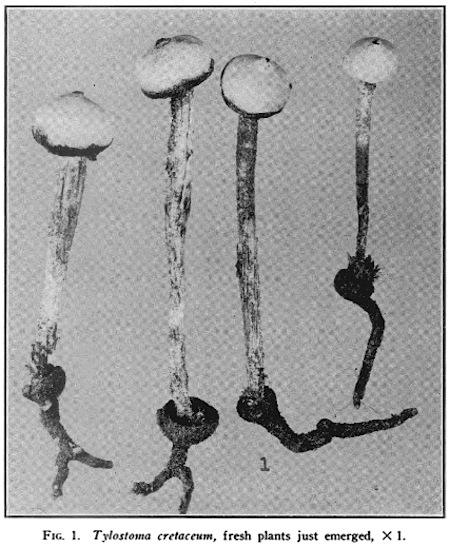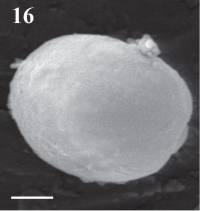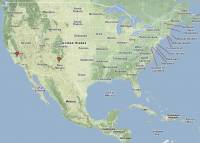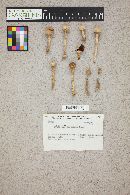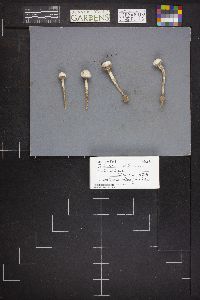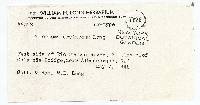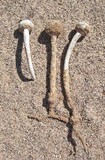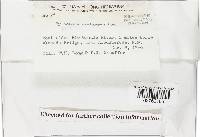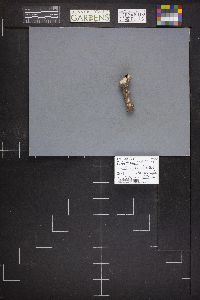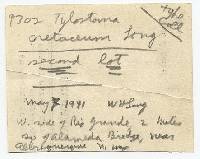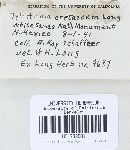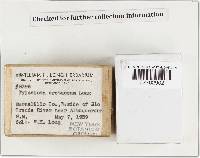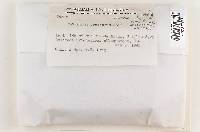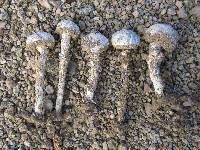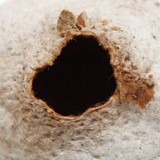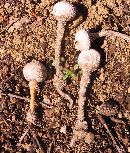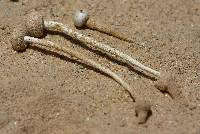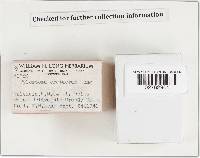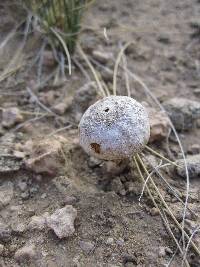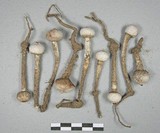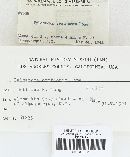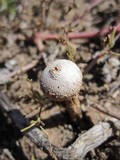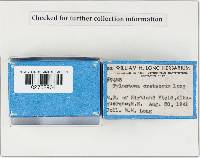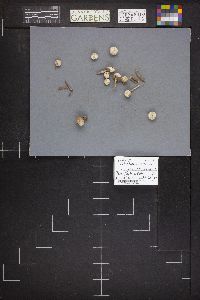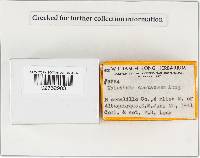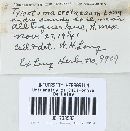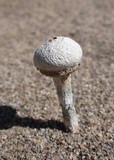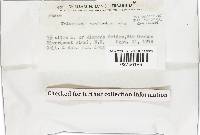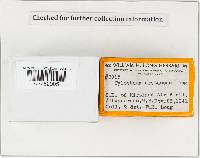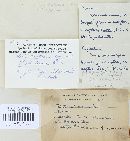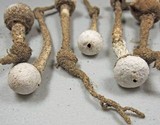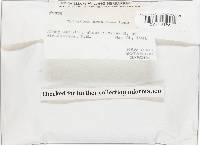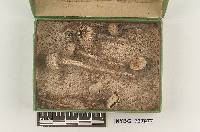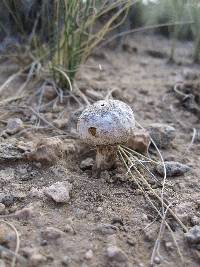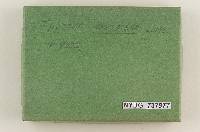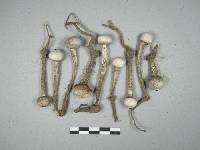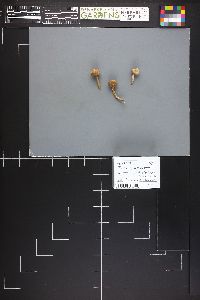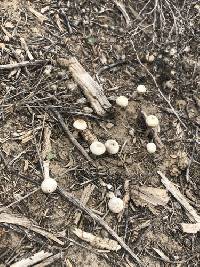
|
|
|
|
Family: Agaricaceae
|
Tylostoma cretaceum Long sp. nov.: Long, W.H. 1944. Studies in the Gasteromycetes X. Seven New Species of Tylostoma. Mycologia 36: 321-322. Sporocarpo ovato, subgloboso usque depresso-globoso. 7-10 mm. alto, 10- 20 mm. lato. Exoperidio semimembranaceo, toto secedenti. Endoperidio cretaceo albido. Ore parum fibrilloso. Stipite 3-10 cm. alto, tenui, 1-3 mm. crasso ad basim, pseudovolvatum, radicatum. Sporis subglobosis, 3.5- 5.6 µ. Sporophore consisting of sporocarp, stipe, volva and radicating base, originating 2-8 cm. below the surface of the soil. Sporocarp ovate, subglobose to depressedl-globose, 7-12 mm. high by 10-20 mm. in diameter, firmly attached to the stem apex. Exoperidium semi-membranous, very thin, coated with sand, becoming friable and granular when dry. "mikado brown to russet" (Ridgway) when fresh, peeling off in flakes just as, or soon after emerging from the soil, usually before the mouth opens, drying to a thin granular layer of flocci and sand if the shedding is delayed, completely deciduous; peridial sheath non-deciduous; a narrow band 2-3 mm. wide with agglutinated hyphae and soil. Exoperidium chalky white when fresh (FIG. 1 ). often becoming dingy white in age, sometimes "tilleul buff," when exoperidium is slow in shedding, membranous, tough, smooth, often pitted. Mouth raised with a scanty fibrillose, granular, pitted peristome, circular, elliptic or irregular, with erumpent lacerate edges in age. stomatal fissures often extending to base of sporocarp under extreme weathering. Stipe slender 3-4 cm. tall, usually attenuate downward, straight or curved, rarely uniform, 4-6 mm thick at spore sac, 1-3 mm. thick at base. smooth, or sometimes minutely scurfy, becoming smooth in age. rarely striate, white. Volva double, outer layer formed from the mycelial pad at base of stipe, 6-10 mm. across by 4-6 mm. high, friable, margin incurved, rounded and even, composed of 2 layers (1) a thick gray, granular outer coat of agglutinated hyphae and sand, and (2) a cream-colored mycelial inner wall; surrounding the stipe inside the volva are the lacerate membranous fragments of the upper part of the stipe cortex 4-10 mm. high which were torn loose from beneath the spore sac on elongation. Base of stipe strongly radicating, roots 1-5 cm. long, 2-6 mm. thick were joined to volva, often branching, similar in context to volva, usually brittle when dry, hence easily broken in handling. Gleba cinnamon brown to dark ferruginous. Capillitium colored, fulvous to brown, 3-7 µ thick, branched, flaccid, often flattened by collapsing then ribbon-like. Some breaking into short pieces, septa rare, not swollen. Spores subglobose to oval, mainly oval, some 1-guttulate, 4-4.5 µ in diameter for globose, and 3.5-4.2 X 4.2-5.6 µ for the oval spores. Epispore fulvous to dark brown, smooth. Wright J.E. 1987. Bibliotheca Mycologia 113: 86. Tulostoma cretaceum Long. (Fig. 32; Pls. XV: 8; XXX: 2; XLI: 1) Mycologia 36: 321-322, fig. 1. 1947. Etym.: the name refers to the chalky colour of the endoperidium. Spore-sac subglobose, 16 x 13 mm. Exoperidium hyphal, with threads intermixed with sand grains, not membranous, persistent, covering in part the endoperidium, white to cream coloured. Endoperidium white to slightly creamish, smooth, membranous. Mouth fibrillose but rapidly turns indefinite upon weathering. Socket conspicuous, separated from stem,membrane entire. Gleba ferrugineous to chocolate colour to sepia. Stem white, up to 80 x 5 mm, distinctly tapering towards the base, longitudinally striate, forming ribs near the apex; with a volviform thickening at the base and very conspicuous radicular rhizomorphs. Spores globose to subglobose, mostly ellisoid, smooth, light brown to dark brown and guttulate under L.M., 4-5.4 µm diam. Under SEM they also appear perfectly smooth. Capillitium slightly yellowish with thin to thick walls, some ribbon-like, and not swollen at the scant septa, with lateral projections and broadened ends; 2-6.1 µm diam. Habitat: sandy soil in semidesertic regions. Distribution: North America: SW United States. South America: W. Argentina. Holotype: United States, New Mexico, W of Rio Grande, "2 mi below Alameda Bridge", leg. W. H. Long, 7.IV.1941 (Herb. Long 9302, BPI!). Illustration: Long (op. cit.). |
|
|
|

